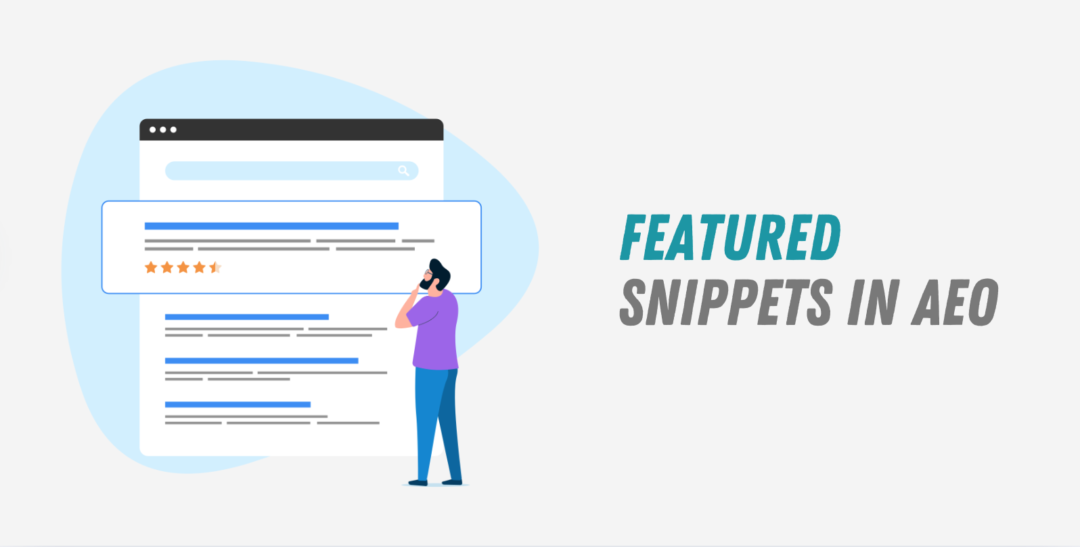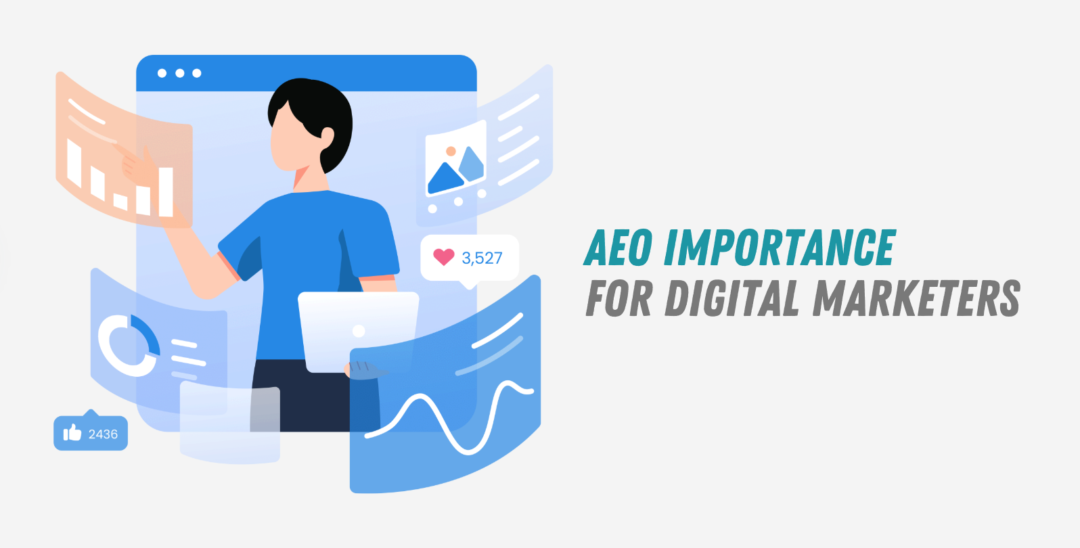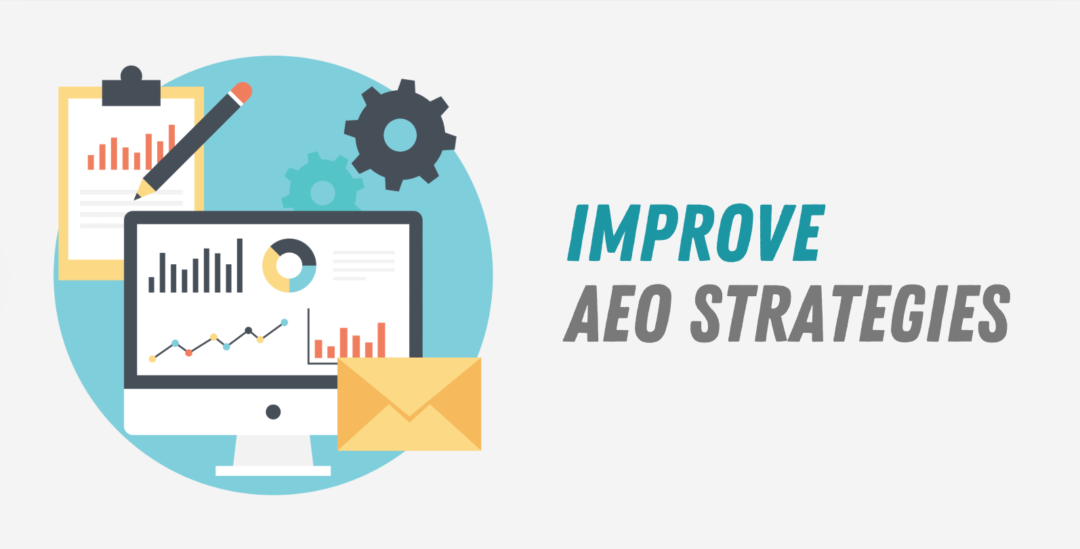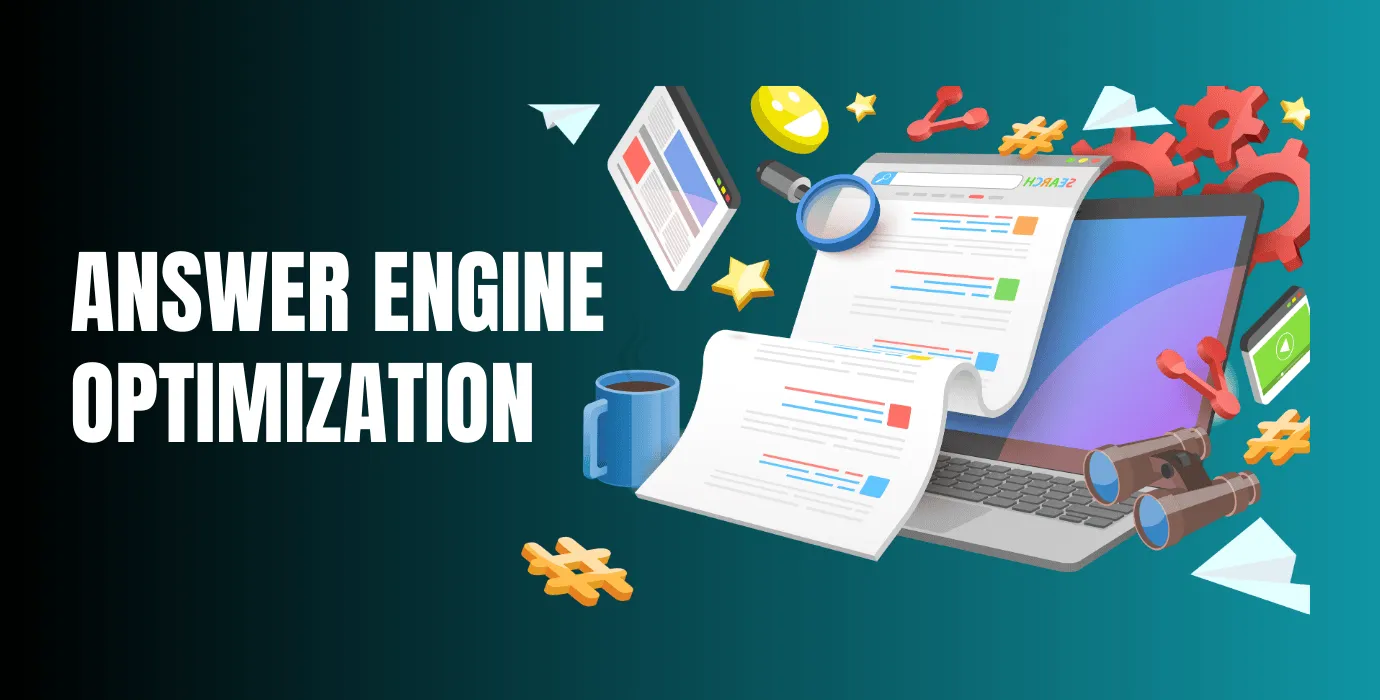Hey Folks! Answer Engine Optimization (AEO) is an emerging SEO strategy focused on optimizing content to directly answer user queries, enhancing visibility in answer engines like Google’s featured snippets. As search engines evolve, they increasingly prioritize providing immediate, relevant answers to users, making AEO crucial for businesses looking to stay competitive.
By understanding AEO’s principles and how it affects content rankings, websites can tailor their content to meet these needs, improving traffic, engagement, and monetization opportunities, especially when combined with effective Google AdSense strategies.
What is Answer Engine Optimization (AEO)?

Answer Engine Optimization, or AEO, is a new digital marketing strategy that focuses on optimizing content to appear as the direct answer in response to user queries in search engines. Unlike traditional SEO, which emphasizes optimizing content for ranking on search engine results pages (SERPs), AEO specifically targets features like featured snippets, knowledge panels, and answer boxes. As I’ve researched, AEO helps websites gain visibility by providing precise, concise answers that search engines like Google pull directly from web pages.
Understanding the Concept of AEO

AEO is a strategy that aims to improve the chances of a website being selected by search engines to display as an answer to a user’s query. This can include different types of answers, such as “paragraph snippets,” “list snippets,” and “table snippets,” among others. AEO revolves around crafting content that directly addresses user questions in search engines.
How AEO Works in Search Engines

Search engines, like Google, use advanced algorithms and AI to identify content that answers a user’s query. Through AEO, content creators can tailor their material to be more likely to appear in response to these queries. I have seen firsthand that precise, structured data with concise answers increases the likelihood of being selected by these algorithms for featured snippets.
The Role of Featured Snippets in AEO

Featured snippets are a key aspect of AEO. This boxed information appears at the top of Google search results and is designed to answer user queries directly. In my research, optimising content for featured snippets can significantly increase visibility and drive organic traffic.
Why Is AEO Important for Digital Marketers?

AEO is becoming increasingly important for digital marketers because it allows websites to appear more prominently in search results. Marketers can increase the likelihood of their content being seen and clicked by targeting answer boxes and featured snippets. I have personally seen how businesses that embrace AEO enjoy a significant boost in visibility, brand authority, and website traffic.
Key Differences Between AEO and SEO

SEO and AEO are often confused, but they serve different purposes. SEO primarily focuses on improving a website’s rank in search engine results, while AEO targets direct answers. In my experience, SEO focuses more on the broader ranking algorithms, while AEO tailors content to answer specific user queries concisely and structured.
How AEO Can Boost Organic Traffic

When optimized correctly, AEO can lead to more organic traffic. This happens because users are more likely to click on answers that appear directly in the search results. Optimizing content for AEO has increased its visibility in search engines and increased click-through rates from featured snippets.
The Growing Influence of AI in AEO
Artificial intelligence plays a significant role in AEO by helping search engines better understand content and match it with user queries. I have seen firsthand how AI analyzes content for relevance and accuracy, ultimately helping select which websites to feature as direct answers.
AEO vs. Traditional SEO: Key Differences
While SEO and AEO share some similarities, they differ significantly in their approach and goals. SEO focuses on improving a site’s rank on SERPs, while AEO focuses on getting content displayed as an answer directly in search results.
Pros and Cons of Answer Engine Optimization (AEO)
How to Target Answer Boxes with AEO
Answer Engine Optimization (AEO) involves targeting answer boxes. This involves analysing user queries and structuring the content to make it easy for search engines to extract answers. The most effective method is to use clear, concise language, break content into short, digestible sections (like bullet points), and ensure that the answer is placed at the beginning of the content.
The Impact of Schema Markup in AEO

Schema markup is vital in AEO because it helps search engines understand content structure. I have noticed that schema markup for questions and answers can greatly enhance content visibility in answer boxes. By providing search engines with more information about the context of a piece of content, schema markup can increase the likelihood that it will be chosen to answer a user query.
For example, adding structured data like FAQ schema or Q&A schema to a webpage helps search engines understand that the page contains valuable question-and-answer content. This boosts the chances of your content appearing in featured snippets or other prominent positions in search results.
How to Optimize for Question-Based Keywords

Question-based keywords are at the core of AEO. These are keywords that typically begin with “What,” “How,” “Why,” “Where,” or “When,” as these words signal to search engines that the content provides a direct answer. In my research, targeting question-based keywords is one of the most effective ways to enhance your chances of appearing in answer boxes.
To optimize for question-based keywords, I recommend focusing on long-tail keywords, as they often indicate a specific query. Additionally, structuring your content with clear headings and subheadings that answer these questions can significantly improve your chances of being featured.
The Role of Natural Language Processing (NLP) in AEO
Natural Language Processing (NLP) plays an essential role in AEO by enabling search engines to understand and interpret human language. As I’ve observed, search engines like Google use NLP to understand the intent behind user queries better and identify the most relevant content.
AEO and Mobile Optimization
With the rise of mobile browsing, AEO and mobile optimization are more intertwined than ever. Search engines are increasingly prioritizing mobile-friendly content. I have found that optimizing content for mobile devices can improve your chances of appearing in answer boxes, as Google often favours content that is easily accessible on smaller screens.
For optimal mobile performance, I recommend using responsive design, concise answers, and mobile-optimized formats like short paragraphs and lists to ensure the content is easy to consume on smartphones and tablets.
Can AEO Help in Voice Search Optimization?

Voice search has recently become a major trend and plays a crucial role in AEO. When users perform voice searches, they typically ask questions conversationally. Optimizing for voice search can help you appear as the featured snippet or in the direct answers read out by voice assistants like Siri, Alexa, and Google Assistant.
To optimize for voice search, focus on question-based keywords, local queries, and content that provides quick, accurate answers.
How AEO Enhances User Experience

One primary goal of AEO is to improve user experience by providing direct answers to their queries. When users can find the information they are looking for quickly and easily, this boosts their satisfaction with the website and encourages them to return.
By optimizing for AEO, you ensure that users get the information they need immediately without having to scroll through long articles or search multiple pages. This reduces bounce rates and increases user engagement.
Case Study: Successful AEO Implementation
In a recent project I worked on, we optimized a blog post for AEO by targeting long-tail question-based keywords and structuring the content for search engines to extract quickly. We used bullet points, headings, and direct answers in the first paragraph. After implementing AEO strategies, the post started appearing as a featured snippet within a week, and organic traffic increased by 40%.
This case study highlights how AEO can result in quick wins by focusing on direct user queries and optimizing content to answer them succinctly.
How to Measure AEO Success

Measuring the success of AEO involves tracking a few key metrics. The most important is CTR (Click-Through Rate) for featured snippets and other answer boxes. Additionally, I track organic traffic to see if the visibility of my content in answer boxes increases the number of users coming from search engines.
Another metric I track is the number of queries for which my content appears as an answer. Tools like Google Search Console help me identify which queries my pages rank for in answer boxes.
Content Formatting Tips for AEO
Formatting plays a crucial role when optimizing content for AEO. I have learned that using clear and structured content makes it easier for search engines to extract relevant answers. Some formatting tips include:
Mistakes
This makes your content more likely to appear in featured snippets or other direct-answer formats.
Using Data to Improve AEO Strategies

Data is essential to improving AEO strategies. I can identify which questions are asked most frequently by analysing user behaviour and search queries and tailor my content accordingly. Tools like Google Analytics and Google Search Console provide insights into which pages perform well and which keywords drive the most traffic.
By constantly reviewing and refining the data, I can optimize my content further to meet the evolving demands of search engines and users.
Common Mistakes to Avoid in AEO
While working with AEO, I’ve learned that there are several mistakes to avoid to ensure success:
Mistakes
Avoiding these mistakes ensures your AEO strategy remains effective and aligns with search engine preferences.
How AEO Affects E-commerce Websites
AEO can significantly impact e-commerce websites by making product-related queries more likely to appear in answer boxes. For example, a frequently asked question about product specifications or usage can be optimized to appear directly in the search results. Also, Optimizing product pages for AEO can result in increased visibility, higher CTR, and, ultimately, more sales.
By answering specific questions related to products or services in your content, you can help potential customers find the answers they need without digging through product pages.
The Future of AEO: What to Expect

As search engines evolve, AEO will likely play an even larger role in SEO strategies. The increasing use of AI, voice search, and mobile optimization suggests that content that answers specific queries will continue to be prioritized. Over time, AEO will become even more integrated with search engines’ core algorithms and will be a key strategy for content creators and marketers looking to stay ahead in the competitive digital landscape.
Tools to Aid AEO Optimization
Several tools can aid in optimizing content for AEO. I recommend using the following:
Tools List
These tools help me identify opportunities to optimize my content for AEO and enhance my chances of appearing as an answer in search results.
AEO and the Rise of Visual Content
With the increasing importance of visual content, AEO is also evolving to include images, videos, and other multimedia elements in answer boxes. I’ve noticed that search engines are now more likely to feature multimedia content, especially in answers to visual or instructional queries.
AEO and Local Search Optimization

AEO also plays a role in local search optimization. Many users search for local businesses or services and expect direct answers. I’ve found that optimizing for local queries and adding location-based information to content increases the chances of appearing in local answer boxes or knowledge panels. Local schema markup and consistent NAP (Name, Address, Phone) data across platforms can help improve local visibility.
Is AEO the Future of SEO?
While traditional SEO will always remain important, AEO is increasingly becoming dominant in digital marketing. I believe AEO will continue evolving as search engines prioritize user experience and provide quick, accurate answers. Therefore, The future of SEO will likely involve a blend of traditional SEO practices and AEO strategies to ensure content stands out and meets users’ needs.
Final Thoughts
Answer Engine Optimization (AEO) is a powerful strategy that can significantly boost visibility, user engagement, and organic traffic. Businesses and content creators can achieve better results by providing direct answers to user queries and optimizing content for search engine algorithms. As search engines prioritize user intent and natural language processing, AEO will remain an integral part of modern SEO strategies, ensuring that content is visible and valuable to users.




